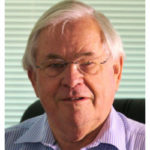Among major threats to human and planetary survival, none comes close to nuclear war.
The tensions between North Korea and America, together with the collapse of the Iranian agreement, have brought nuclear war back into focus.
During the Cold War, Australian advocacy in relation to denuclearisation was strong, not least among physicians such as South Australian Ian Maddocks through the International Physicians for the Prevention of Nuclear War (IPPNW) and Helen Caldicott, another physician and leader of Physicians for Social Responsibility, described as the ‘the largest physician-led organization in the US working to protect the public from the threats of nuclear proliferation, climate change, and environmental toxins’.
A campaign against the French nuclear presence in the South Pacific in 1995 was strongly supported by Australian and New Zealand public health physicians including Jack Best and Sue Morey. They galvanised Pacific nation public health medical specialists to agitate, Roro Daniel from the Cook Islands being especially vocal. As Dr Best says, “The French stopped their tests the year after our campaign. What did our campaign do? Who knows, but there are no tests now.”
The 2017 Nobel Peace Prize went to the International Campaign to Abolish Nuclear Weapons (ICAN) which continues in this tradition with a strong Australian connection.
It received scant media attention here, despite an Australian, a critically important founding member of that organisation, being a recipient. The citation for the award read “for [ICAN’s} work to draw attention to the catastrophic humanitarian consequences of any use of nuclear weapons and for its ground-breaking efforts to achieve a treaty-based prohibition of such weapons.”
ICAN grew out of IPPNW and was launched in 2007. Dr Tilman Ruff, a public health physician from Melbourne, is prominent in the organisation.
ICAN, as Wikipedia tells it, is a “global civil society coalition working to promote adherence to and full implementation of the Treaty on the Prohibition of Nuclear Weapons. The campaign helped bring about this treaty. As of 2017 it has 468 partner organisations in 101 countries.”
The medical presence first in IPPNW and now in ICAN is substantial. There is no subtlety about the effects of nuclear weapons and no question about the health hazard posed by them to human survival.
It is easy to feel powerless in the face of such a threat, but the work of IPPNW is reassuring. Since 1953, in the face of the threat of nuclear annihilation, it was credited with a major contribution to UN Limited Nuclear Test Ban Treaty in 1963.
Lachlan Forrow, a doctor, Tilman Ruff, and Setsuko Thurlow, a Japanese–Canadian nuclear disarmament campaigner who survived the atomic bombing of Hiroshima in 1945, wrote about what was achieved by IPPNW in a recent Perspective paper in The New England Journal of Medicine. “When the Cold War ended in 1991, the [Doomsday] Clock was set back to 17 minutes to midnight,” they said. But now,
….nuclear disarmament has stalled: today, nine countries — Russia, the United States, France, China, the United Kingdom, Pakistan, India, Israel, and North Korea — maintain nearly 15,000 nuclear weapons. Almost 20 years after warnings were published … about the dangers of “accidental nuclear war,” nearly 2000 weapons remain on “launch-on-warning” hair-trigger alert, despite the growing vulnerability of weapons systems to cyberattack.
Forrow, Ruff and Thurlow continue:
The urgency of ICAN’s work was recently highlighted when the Bulletin of the Atomic Scientists moved its Doomsday Clock forward to just 2 minutes to midnight, the highest level of danger since 1953 and 5 minutes closer to midnight than when concerns about U.S. and Soviet preparations for nuclear war sparked the founding of IPNNW
“ICAN applies to nuclear weapons a proven strategy for making progress toward the elimination of other inhumane and indiscriminate weapons, such as biologic and chemical weapons, antipersonnel land mines, and cluster munitions. This approach can be summarized as stigmatize, prohibit, and eliminate.
In each case, weapons that cannot be used without unacceptable consequences have first been prohibited in an international treaty, which has laid the foundation for their progressive elimination.
ICAN has rapidly grown into a global campaign coalition of nearly 500 partner organizations in more than 100 countries with the goal of uniting all sectors of civil society, in partnership with governments, to work toward complete nuclear disarmament.
A “limited” nuclear war involving 100 Hiroshima-size nuclear weapons (less than 1% of the current stockpile of weapons) “would ignite massive confluent fires that would release millions of tons of smoke and soot into the atmosphere.
“Such pollutants would cause substantial global cooling, drying, and darkening for more than a decade, disrupting food production worldwide and putting more than 2 billion people, the majority of them in Africa and Asia, at risk for death from starvation.”
The hands on the Doomsday Clock now rest at two minutes to midnight, the direst it has been. Doctors can draw attention to the humanitarian and health disasters following nuclear war. The ICAN philosophy is to use these health consequences to lead the debate that in turn will change policy and treaties – as it did with land mines.
An edited version of this article appeared in Australian Medicine recently. Stephen Leeder works at Westmead Hospital in Sydney.




